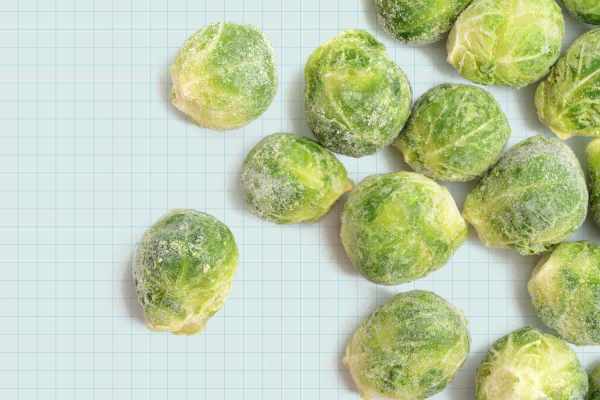
You’ve probably heard that, for the most part, frozen veggies have just as much nutritional value as fresh—and perhaps more, since many of us let our veggies sit in the crisper drawer a little too long. But if frozen veggies are great for you, are there particular types you should choose if you’re keeping an eye on your blood sugar?
We asked three dietitians to find out. Their answer: Keeping blood sugar balanced involves focusing on the carbs and fiber in your veggie choices. “Vegetables are typically low in carbohydrates, so [they have] less impact on blood sugar,” says Annette Snyder, M.S., RDa registered dietitian with Top Nutrition Coaching. When more of those carbohydrates come from filling fiber, these veggie choices can help prevent overeating and promote weight management, she says, recommending vegetables that contain at least 3 grams of fiber per serving.
We rounded up seven delicious dietitian-approved frozen vegetables. Here’s our list of veggies you can keep on hand for tons of blood sugar-friendly nutrition.
You’ve probably seen these: they’re a combo of various veggies like mushrooms, onions, bell peppers and more. The veggies in stir-fry blends are typically lower-carb and higher in fiber, making this a great bag to pick up next time you’re at the store, suggests Lenora Vatamaniuck, RDa registered dietitian based in Saskatchewan, Canada. Transform a frozen bag of stir-fry veggies into a full meal by adding chicken, shrimp, lean cuts of beef or another protein-rich food.
Frozen cauliflower is always a winner. You can find it in little florets or “riced,” which can be used in place of starchy rice in many dishes. For some people, rice may spike their blood sugar levels, but cauliflower rice is so low in carbs that you probably won’t notice any difference. One cup of cauliflower rice has about 5 grams of carbs, plus 3 grams of fiber. Win-win. Enjoy cauliflower rice as a rice substitute in dishes like this Spinach & Artichoke Casserole with Chicken and Cauliflower Rice or learn How to Make Cauliflower Rice yourself.
Broccoli–you either love it, or you haven’t had it prepared in a delicious way yet. This cruciferous veggie can be yummy with the right preparation and flavors added to it. “Cruciferous (and still fiber-rich) vegetables like broccoli contain a chemical called sulforaphane that is released when the plant is cut or chewed. Sulforaphane may improve sensitivity to insulin and thus lower blood sugar,” Snyder says. To make it easy on you, we rounded up 14 Recipes That Start with a Bag of Frozen Broccoli.
You can’t go wrong with spinach, and even Popeye knew it. Just 1 cup of frozen spinach contains almost 7 grams of carbohydrates, including 4.5 grams of fiber. Spinach can add a huge boost of nutrients without altering the flavor of soups, stews and casseroles. Try this Slow-Cooker Spinach Artichoke Dip with fresh veggies to dip into the creamy goodness. Or go for this Hearty Chickpea & Spinach Stew.
Kale is still having its heyday. And for good reason: The American Diabetes Association recommends dark, leafy green vegetables like kale for their low calorie and carb content, in addition to nutrients like iron, calcium, potassium, folate and vitamins A, C and K. One cup of kale has less than 1 gram of carbs, and it’s basically all fiber. Not bad! (Actually, really great.) Here’s a must-try Autumn Salad.
You may not be a fan of this veggie, but hear us out. They’re bursting with nutrition, and Snyder highly recommends Brussels for their fiber content. One cup of Brussels sprouts cooked from frozen offers 6 grams of fiber. They’re also loaded up with vitamin C. It’s time to find a way to enjoy these little nutrition powerhouses, such as roasting them with a little olive oil and salt until crispy. Check out How to Cook Brussels Sprouts So They’re Actually Delicious.
Sweet potatoes are a little higher on the glycemic index than the other veggies on this list, but Snyder points us toward their high fiber content. Cooked from frozen, these sweet spuds have about 3 grams fiber per cup, plus some magnesium, a mineral that may help improve glucose metabolism., The ADA recommends consuming magnesium-containing foods, as it’s common to be deficient in this mineral. Try our Anti-Inflammatory Sweet Potato Salad, which contains two veggies on our list: sweet potatoes and kale.
Choosing frozen vegetables isn’t as simple as plucking a bag from the chilly shelf. “Frozen veggies can contain just as many nutrients as their non-frozen counterparts. However, they may also contain additional sources of sugars, fats and sodium (salt),” says Lena Bakovic, MS, RDa registered dietitian with Top Nutrition Coaching. “That is why it is important to always read Nutrition Facts labels and ingredient lists on frozen vegetable packages and to check for additional ingredients/additives,” she adds. Ideally, the only ingredient on the package should be the vegetable or vegetables, adds Vatamaniuck.
Frozen vegetables are a great source of nutrition for everybody, but if you’re watching your blood sugar, they’ll be a great staple in your kitchen. Be sure to watch that ingredient list, experiment with some new types of vegetables and enjoy the nutritional benefits you’ll be getting from all the new veggies in your life.